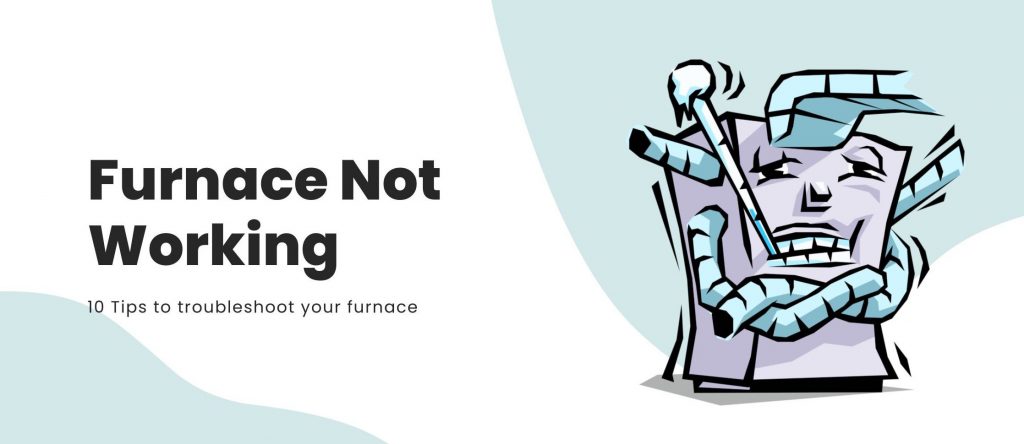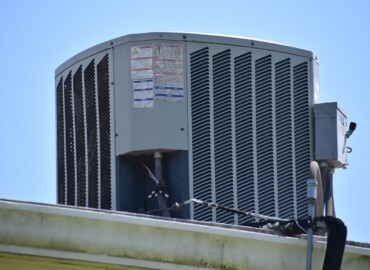Is your furnace not working? Try 10 troubleshooting tips
Who does not love a hot cozy home in the snowy winter of Canada? But apartment walls alone can’t keep you warm. Furnaces regulate indoor temperature and offer the essential heat shield from freezing cold weather. The temperature in Canada sometimes drops to around -40℃, chilling-cold. An air furnace is the primary heating source for 6 out of 10 Canadians. Furnace not working and furnace failures are the last thing people want to experience, as cold weather affects health and disrupts daily routines.
Over time homeowners often complain about the furnace not working. A non-working or inefficient furnace makes the living place uncomfortable and causes higher energy bills. Thus, it is imperative to understand the common causes behind the furnace not working and tips to troubleshoot such issues.
Reasons why your furnace is not working
Like any other machinery, furnaces also face issues with time and use. Maintenance and professional advice resolve such issues on time.
Some common reasons why your furnace is not working are as follows:
1. Faulty ignition sensor or pilot light
An ignition sensor or pilot light problem is often the cause of furnaces not working. Heating a home or a space could be challenging if the pilot light or ignition sensor is defective. Frequent furnace starts and stops indicate an inefficient ignition sensor or pilot light. Thermocouple issues, clogs, etc., cause unlit pilot light.
2. Short cycling
Short cycling means disruption of ideal heating and resting cycle time with frequent turning on and off of furnaces, affecting furnace ability to reach the desired temperature and causing furnace issues. Although short cycling does not affect health, it causes the furnace to fail. Filthy air filters, inefficient flame sensors, air leaks, poor blowers, etc., are culprits of short cycling.
3. Malfunctioning thermostat
A malfunctioning thermostat may cause issues with the furnace fan and inefficient functioning of a furnace. The thermostat setting to heat mode is a must to warm the house. Poor thermostat settings, low batteries, tripped breakers, clogged electrical systems, etc., may cause malfunctioning of thermostats and further non-working of furnaces.
4. Constant blower run
A blower is a vital part of a furnace that draws cool air into the heat exchanger. Any malfunctioning with the blower, especially the constant running of a blower fan, affects furnace efficiency. The possible reasons for continuous running of the blower fan are defective wiring of the thermostat, wrong fan limit, setting fan limit switch to manual override, etc.
Troubleshoot tips if your furnace is not working efficiently
Frequent issues with furnaces may overwhelm you emotionally and financially. You refer to many youtube videos to fix them but get lost in the heap of information. Worry not! Use the following troubleshooting tips if your furnace is not working smoothly:
1. Thermostat setting
First and foremost, ensure your thermostat is set to Heat mode. Then adjust a few degrees up or down and see if you feel any difference. Check if thermostat batteries need replacement, the electrical wiring system is free from dirt and debris, and no schedule setting prevents a furnace from turning on.
2. Rectify tripped breaker
You have a tripped breaker if your furnace does not work even with the switch turned on. Find the Furnace or HVAC circuit control on the home breaker panel and check whether it is “On or Off. You can check the breaker manually by flipping the switch and observing if it holds the “On” position.
A tripped breaker or burned-out fuse is a pressing electrical issue. Thus, hire a certified HVAC technician to inspect it.
3. Resolve pilot light issue
The pilot light is the ignitor for warming up the house. You can take the following steps to fix pilot light issues:
Flip the power switch off and back on to reset the pilot light
Turn off the gas and electricity supply to inspect the heating elements. Replace the ignitor if it appears cracked or damaged
Refer to the furnace manual and follow the steps diligently, as a small mistake could harm the system.
4. Fix the blower
If the blower runs nonstop, check whether the thermostat is set to an Auto mode, not On. Ensure the limit switch is not instructing the furnace fan to run continuously even without heating cycles. Click here to understand when to replace or repair the limit switch. If you continue to face the issue, call an HVAC technician for help.
5. Noisy furnace
If you are facing the issue of rumbling or abnormal noises, identify the source of the noise as air moves through the ductwork. To resolve the issue, try lubricating the blower motor and belt, proper pilot light setting, unclog burners, etc. If you continue to face the problem, contact an HVAC expert.
6. Air filters
Furnace filters keep away the dirt and debris from the blower fan, blowing allergens-free warm air in your homes. Ensure the furnace filter is fresh and clean and all vent registers are free of obstructions. If the issue persists, you might need to call an HVAC specialist to clean your air ducts.
7. Air ducts
In many cases, a furnace is not effective throughout the home. You may face the issue of hot and cold spots around the house. Clogged air ducts are the root cause of ineffective heating. Thus, inspect the ductwork to ensure enough space for smooth airflow. You can use metal duct tape to prevent potential leaks.
8. Gas line
Ensure a continuous supply of gas to the furnace. Inspect the shut-off valve outside, ensure the gas is on, and secure a constant gas supply to the furnace. Your furnace may struggle if it does not have enough fuel.
Safety tip:– If you smell gas or think there is a leak, leave your house immediately and call a professional to assess the emergency.
9. Panel door
Some furnaces are equipped with front panels, also known as safety doors. They prevent furnaces from engaging if the door is closed. Ensure the door is in place for the functioning of a furnace. If you need to replace furnace doors, turn off the power, prepare and wire the furnace panels, and test them.
10. Call a certified HVAC expert
If you think your problem is beyond the above-stated common issues, expert help is what you require the most. Get your system inspected to save money and time. An expert will investigate the problems of a furnace in more detail and offer feasible solutions. If you live in Toronto and need your furnace repair in Toronto, Call us.
FAQ
How can you prevent “furnace not working” issues?
Keep your furnace and its filters clean, Regular maintenance and Seek professional help when required
How does maintenance help?
With regular maintenance inspection, experts resolve furnace issues on time. Regular maintenance extends the lifespan of the system and saves you power bills. Experts recommend twice a year maintenance, especially before starting the winter use, for efficient and smooth functioning of a furnace.
Can a low battery affect the thermostat?
A low battery can result in inaccurate thermostat readings for room temperature. Your thermostat may turn on automatically when it should be off. Lastly, a low battery could result in a complete shutdown of the heating system, as the thermostat may fail to initiate or stop the furnace.





